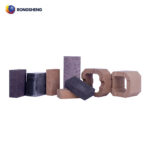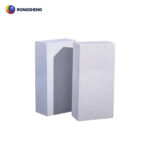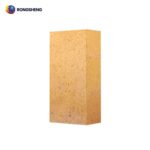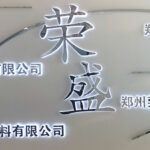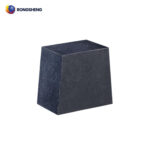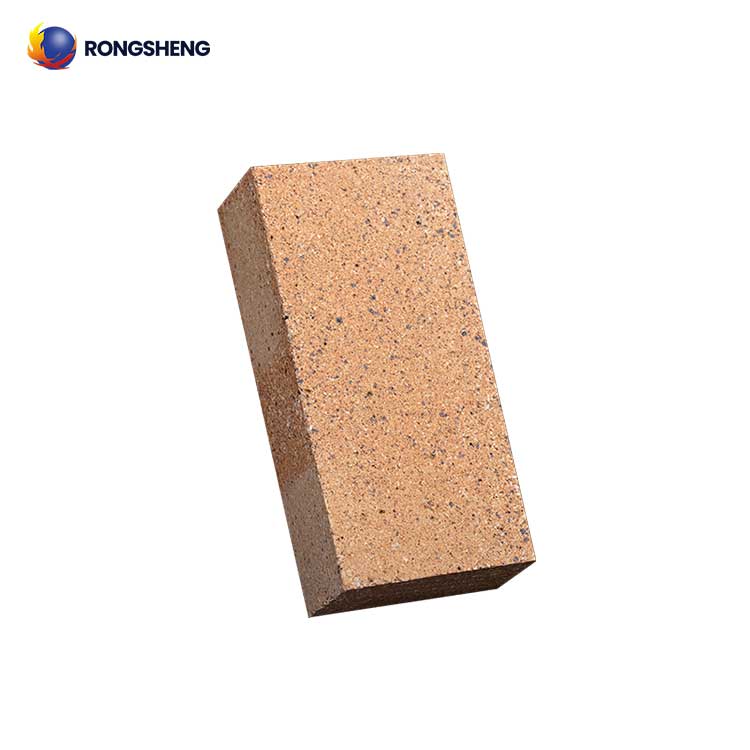
Clay Refractory Bricks
- Clay bricks for blast furnaces.
- Clay bricks for hot blast furnaces.
- Clay bricks for glass kilns.
- Clay bricks for coke ovens.
We are Here to Help!
Email: sales@hy-refractory.com
WhatsApp: +86 185 3831 2977
Clay refractory bricks are refractory materials with an Al2O3 content of 30% to 48%, made of clay clinker as aggregate and refractory clay (soft clay or semi-soft clay) as binder. It is a refractory brick product with a wide range of uses and the largest output. Rongsheng’s high-quality clay bricks, clay bricks for blast furnaces, clay bricks for hot blast furnaces, and clay bricks for glass kilns. Free Quote Now!
Properties and Characteristics of Clay Refractory Bricks
The properties of clay refractory bricks fluctuate within a wide range, which is due to differences in the chemical composition of the products and production processes. Clay products generally have the following properties:
- (1) Chemical and mineral composition. The Al2O3 content is 30% ~ 48%, the SiO2 content is 50% ~ 65%, and a small amount of alkali metal and alkaline earth metal oxides TiO2, Fe2O3, etc. The mineral composition is generally: mullite, cristobalite, quartz, and glass phases.
- (2) The refractoriness is generally 1580 ~ 1750℃. It increases with the increase of Al2O3/SiO2. When the low melt impurity content is high, the refractory degree of the product is significantly reduced.
- (3) The load softening temperature is about 1250 ~ 1450℃, and its variation range is wide. The starting deformation temperature is low, which is about 200~250℃ different from the 40% deformation temperature.
- (4) The linear expansion coefficient is low. The average linear expansion coefficient at 20 ~ 1000℃ is (4.5 ~ 6) × 10-6/℃. Its thermal conductivity is also low.
- (5) Thermal shock resistance is good and the fluctuation range is large. 1100℃ water cooling cycle is generally more than 10 times. This is related to the low linear expansion coefficient of clay products, the insignificant crystal transformation effect, and the plasticity at high temperatures.
- (6) Resistance to chemical attack. Because it is weakly acidic, it has strong resistance to acidic slag erosion and weak resistance to alkaline material erosion.
Clay refractory bricks are acidic refractory products and their acidity increases as the SiO2 content increases. It has certain corrosion resistance to acidic slag, but has poor resistance to alkaline slag corrosion. Therefore, clay refractory bricks are suitable for use as the inner wall of acid kilns. It is also used in high-temperature kilns such as blast furnaces, hot blast furnaces, glass kilns, and carbon roasting furnaces.
Technical Indicators of Clay Refractory Bricks
The standard for clay refractory products is YB/T5106-1993. It specifies the physical and chemical indicators of clay bricks.
| Physical and Chemical Indicators of Clay Refractory Bricks | |||||||||
| Items | N-1 | N-2a | N-2b | N-3a | N-3b | N-4 | N-5 | N-6 | |
| Refractoriness ℃, ≥ | 1760 | 1740 | 1740 | 1720 | 1720 | 1700 | 1660 | 1580 | |
| 0.2MPa Load Softening Start Temperature ℃, ≥ | 1400 | 1350 | – | 1320 | – | 1300 | – | – | |
| Re-burning Line Change Rate % | 1400℃, 2h | +0.1 -0.4 |
+0.1 -0.5 |
+0.2 -0.5 |
– | – | – | – | – |
| 1350℃, 2h | – | – | – | +0.2 -0.5 |
+0.2 -0.5 |
+0.2 -0.5 |
+0.2 -0.5 |
– | |
| Apparent Porosity %, ≤ | 22 | 24 | 26 | 24 | 26 | 24 | 26 | 28 | |
| Compressive Strength at RoomTemperature MPa, ≥ | 30 | 25 | 20 | 20 | 15 | 20 | 15 | 15 | |
Clay Bricks for Various Industrial Kilns
Clay Bricks for Blast Furnaces
Clay bricks for blast furnaces are used for the throat, body, hearth, bottom of small blast furnace linings and the body of large blast furnaces. Clay bricks for blast furnaces require high compressive strength at room temperature and can resist the wear of long-term operation of furnace materials. Small volume shrinkage under high temperature and long-term operation is conducive to maintaining the integrity of the furnace lining. Low apparent porosity and low Fe2O3 content reduce carbon deposition in the pores and prevent the bricks from expanding and loosening during use and being damaged. Less low-melting-point substances are formed. Metallurgical Standard YB/T5050-1993 stipulates the physical and chemical indicators of clay bricks for blast furnaces.
Physical and Chemical Indicators of Clay Bricks for Blast Furnaces
| Physical and Chemical Indicators of Clay Bricks for Blast Furnaces | ||
| Items | ZGN-42 | GN-42 |
| Al2O3 %, ≥ | 42 | 42 |
| Fe2O3 %, ≤ | 1.7 | 1.7 |
| Refractoriness ℃, ≥ | 1760 | 1760 |
| 0.2MPa Load Softening Start Temperature ℃, ≥ | 1450 | 1430 |
| Re-burning Line Change Rate (1450℃, 3h) % | 0 ~ -2 | 0 ~ -3 |
| Apparent Porosity %, ≤ | 15 | 16 |
| Compressive Strength at Room Temperature MPa, ≥ | 58.8 | 49.0 |
Clay Bricks for Hot Blast Furnaces
Clay bricks for hot blast furnaces require good thermal shock resistance, high load softening temperature, and small creep. They are mainly used in heat storage chambers and partitions of hot blast furnaces. Metallurgical Standard YB/T5107-1993 stipulates the physical and chemical indicators of clay bricks for hot blast furnaces.
Physical and Chemical Indicators of Clay Refractory Bricks for Hot Blast Furnaces
| Physical and Chemical Indicators of Clay Refractory Bricks for Hot Blast Furnaces | ||||
| Items | RN-42 | RN-40 | RN-36 | |
| Al2O3 %, ≥ | 42 | 40 | 36 | |
| Refractoriness ℃, ≥ | 1760 | 1740 | 1700 | |
| 0.2MPa Load Softening Start Temperature ℃, ≥ | 1400 | 1350 | 1300 | |
| Re-burning Line Change Rate % | 1450℃, 3h | 0 ~ -0.4 | – | – |
| 1350℃, 3h | – | 0 ~ -0.3 | 0 ~ -0.5 | |
| Apparent Porosity %, ≤ | 24 | 24 | 25 | |
| Compressive Strength at Normal Temperature MPa, ≥ | 29.4 | 24.5 | 19.6 | |
Large Clay Bricks for Glass Kilns
Large clay bricks for glass kilns are clay bricks used for building glass kilns with a unit weight of not less than 50 kg. Metallurgical Standard YB/T5108-1993 stipulates the physical and chemical indicators of large clay bricks for glass kilns.
Physical and Chemical Indicators of Large Clay Bricks for Glass Kilns
| Physical and Chemical Indicators of Large Clay Bricks for Glass Kilns | ||
| Items | BN-40a | BN-40b |
| Al2O3 %, ≥ | 40 | 40 |
| Fe2O3 %, ≤ | 1.5 | 1.8 |
| 0.2MPa Load Softening Start Temperature ℃, ≥ | 1450 | 1400 |
| Re-burning Line Change Rate (1400℃, 2h) % | 0 ~ -0.4 | |
| Apparent Porosity %, ≤ | 18 | 18 |
| Compressive Strength at Normal Temperature MPa, ≥ | 49.0 | 34.3 |
Rongsheng Refractory Material Manufacturer
Rongsheng Refractory Material Manufacturer is a powerful manufacturer and seller of refractory materials. Rongsheng can customize the specifications and sizes of refractory bricks according to the actual working conditions of high-temperature industrial furnaces. We offer customized refractory material solutions and refractory bricks for kiln maintenance and construction, including clay refractory bricks, high-alumina bricks, corundum bricks, etc. Contact Rongsheng for free samples and quotes.

